
Somehow this is comfortable

The girls totally crashed.


Both the number of unemployed persons (8.8 million) and the unemployment rate (5.7 percent) rose in July. Over the past 12 months, the number of unemployed persons has increased by 1.6 million, and the unemployment rate has risen by 1.0 percentage point.
In July, the number of persons who worked part time for economic reasons rose by 308,000 to 5.7 million and has risen by 1.4 million over the past 12 months. This category includes persons who indicated that they would like to work full time but were working part time because their hours had been cut back or they were unable to find full-time jobs.
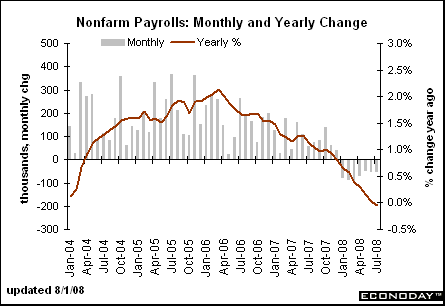
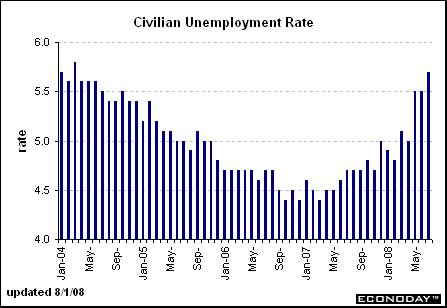
General Motors Corp., the largest U.S. automaker, reported a second-quarter loss of $15.5 billion because of strains from truck leases, costs from labor disputes and plunging U.S. sales.
......
The mounting losses are siphoning resources Chief Executive Officer Rick Wagoner, 55, needs to develop fuel-saving cars to replace the pickup trucks and sport-utility vehicles being abandoned by U.S. buyers. Wagoner, now in his 9th year as CEO, won't project when GM will restore profit as he cuts costs by an additional $9 billion annually and carries out a plan to boost cash by as much as $17 billion.
``The trends that are out of their control, those are the things that have the potential to overwhelm them,'' Robert Schulz, a debt analyst at Standard & Poor's, said yesterday. He was referring to record gasoline prices that have transformed consumer behavior while a weakened U.S. economy drains auto sales to 15-year lows. ``We don't see the macro environment anywhere near on the mend,'' Schulz said.
.....
S&P yesterday cut GM's credit rating one level to B-, or six steps below investment grade, because falling U.S. sales are causing the automaker to use more cash than anticipated. With the U.S. auto slump expected to carry into next year, GM faces a risk of further cuts, Schulz said. GM had the highest rating, AAA, from 1953 until 1981.
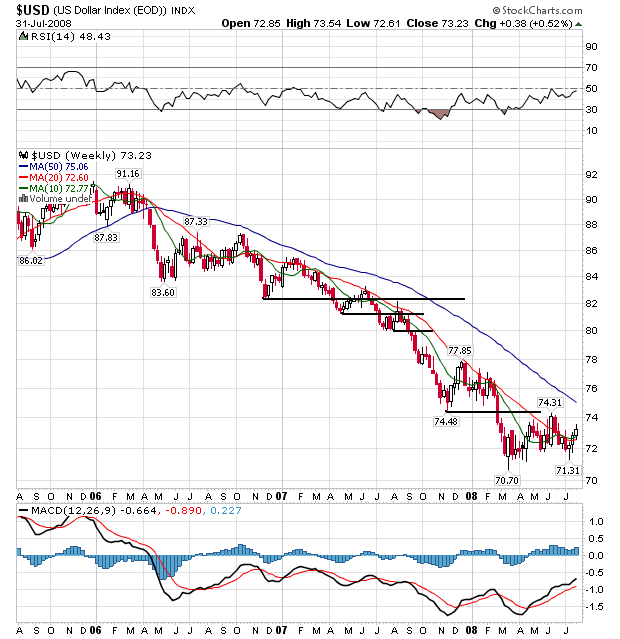

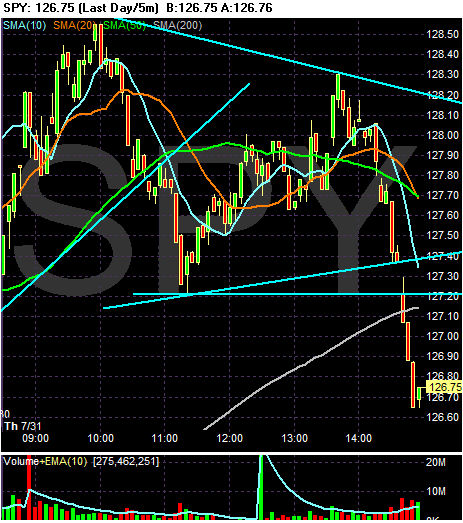


The Commerce Department reported Thursday that gross domestic product, or GDP, increased at an annual rate of 1.9 percent in the April-to-June period. That marked an improvement over the feeble 0.9 percent growth logged in the first quarter of this year and an outright contraction in the economy during the final quarter of last year.
The acceleration in real GDP growth in the second quarter primarily reflected a larger decrease in imports, an acceleration in exports, a smaller decrease in residential fixed investment, and an acceleration in PCE that were partly offset by a larger decrease in inventory investment.
Annual benchmark revisions showed consumer spending slowed more than previously estimated and the housing slump worsened. The economy shrank 0.2 percent in the fourth quarter last year, compared with a previously reported 0.6 percent gain.

Fitch Ratings downgraded Chrysler LLC's debt further into the junk category and warned that the struggling U.S. automaker could face difficulties in financing unless U.S. auto sales recovered in 2009.
Chrysler, which lost $1.6 billion in 2007, could struggle to finance operations in the second half of 2009 if industry volumes remained at this year's depressed levels or dropped further, according to a Fitch report released on Tuesday.
Fitch, which cut Chrysler's ratings from B- to CCC, just two notches above default, said the decision last week by Chrysler's finance arm Chrysler Financial to stop financing vehicle leases for U.S. consumers would depress already sluggish sales.
It rated Chrysler's outlook as negative, indicating a further rating cut is likely in the next six months.
Chrysler LLC is scrambling to slash costs and line up partnerships with foreign auto makers to shore up its finances amid a painful downturn in sales and a deteriorating outlook for the company, people familiar with the matter said.


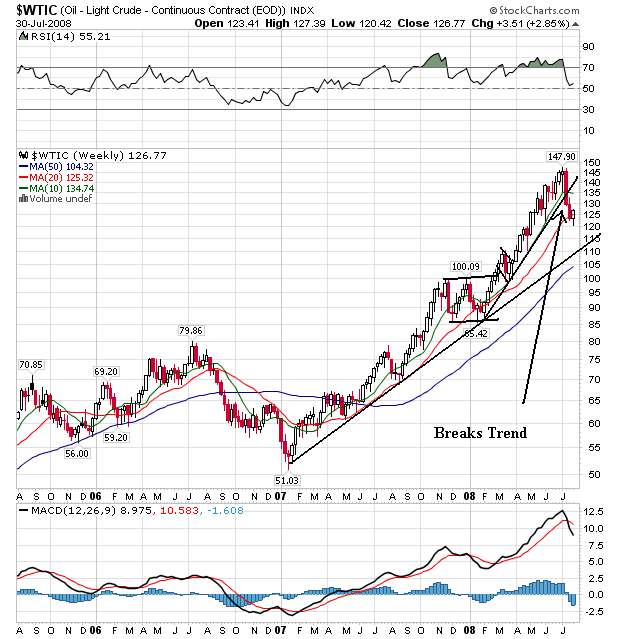
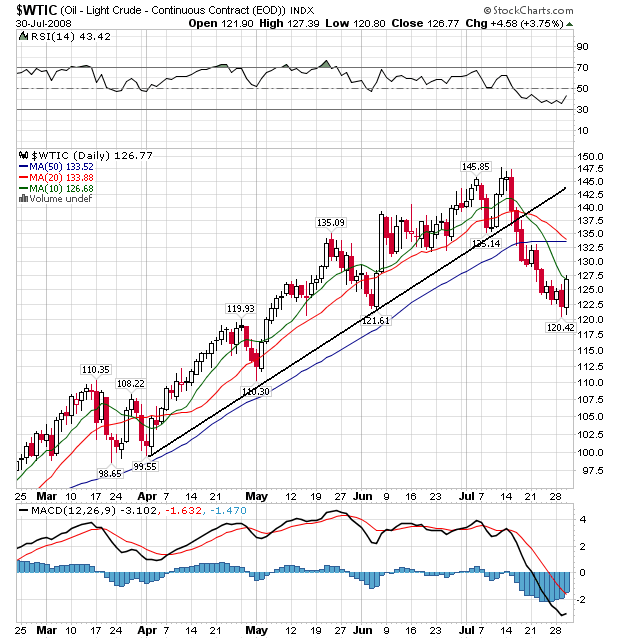

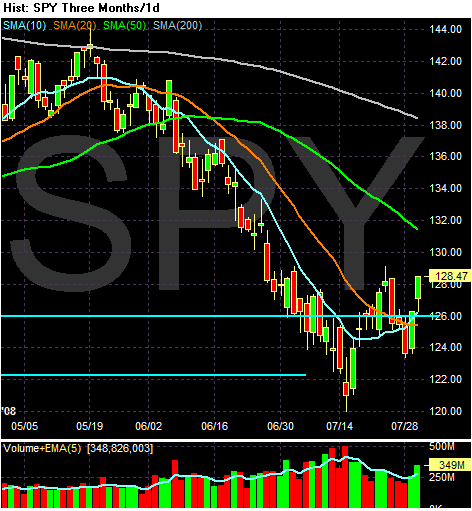
The Federal Reserve extended its emergency lending programs to Wall Street firms through January after policy makers judged that markets are still ``fragile.''
The Fed also plans to give securities dealers options for tapping one of the loan programs to ensure financing through the ends of quarters, when funding needs can jump. Commercial lenders will be able to borrow from the central bank for a longer period, and the Fed boosted its swap line with the European Central Bank.
Today's action reflects continued financial turmoil, with premiums banks charge each other for three-month funds over the Fed's expected benchmark rate little changed since May. It's the latest step in officials' efforts to combat the yearlong credit crisis, after the Fed's March rescue of Bear Stearns Cos. and the Treasury's backstop for Fannie Mae and Freddie Mac this month.
``The U.S. is pulling out all the stops here to make sure we don't have a terrible downturn or a collapse in the financial system,'' said Allen Sinai, chief global economist at Decision Economics in Boston. ``There isn't anything else the Federal Reserve can do but to keep pumping liquidity into the system.''
The Primary Dealer Credit Facility for direct loans to securities firms and the Term Securities Lending Facility for loans of Treasuries, both begun in March, will now extend through Jan. 30. They would then be canceled if the Fed judges that markets ``are no longer unusual and exigent,'' the Fed said in a statement today in Washington.

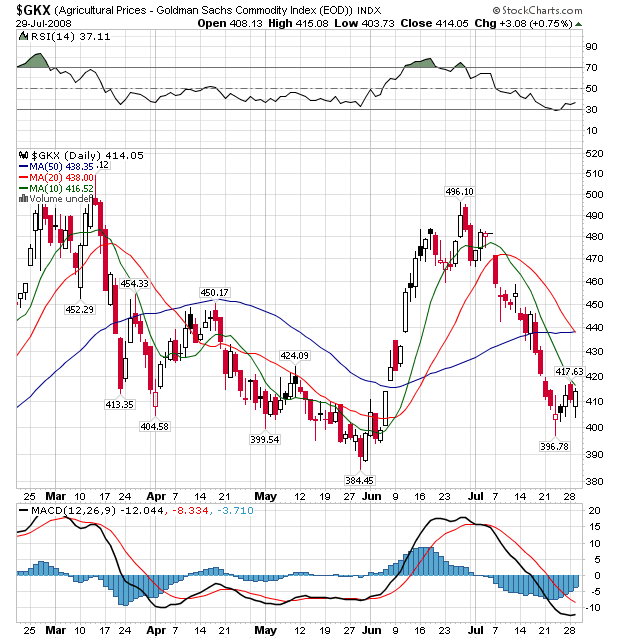

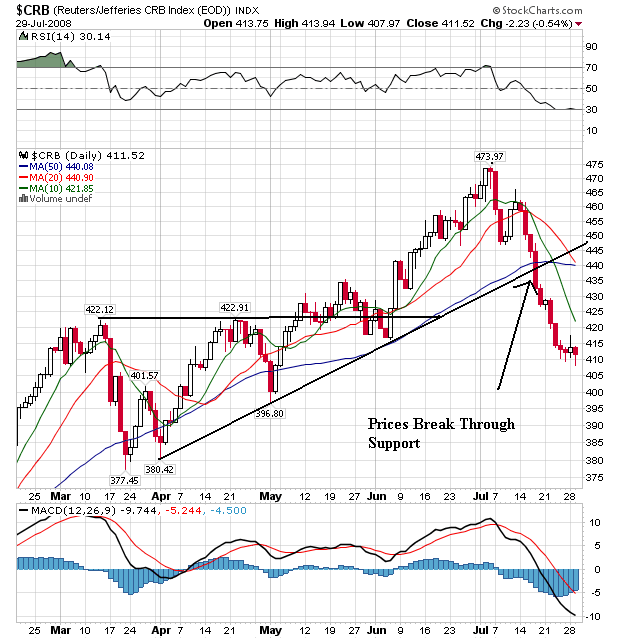
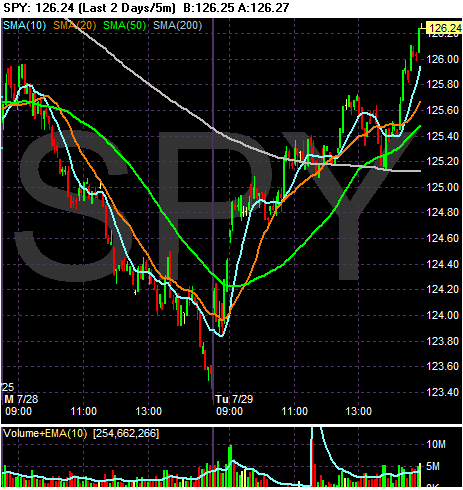
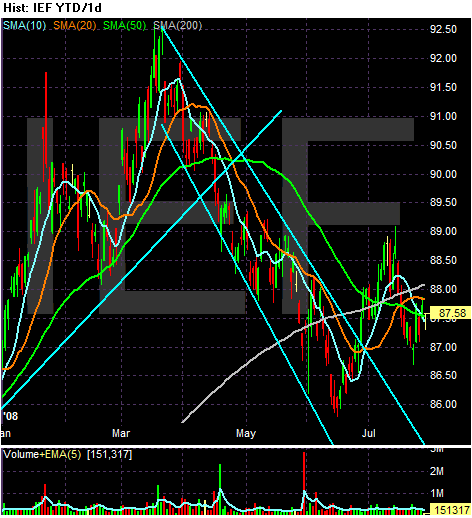
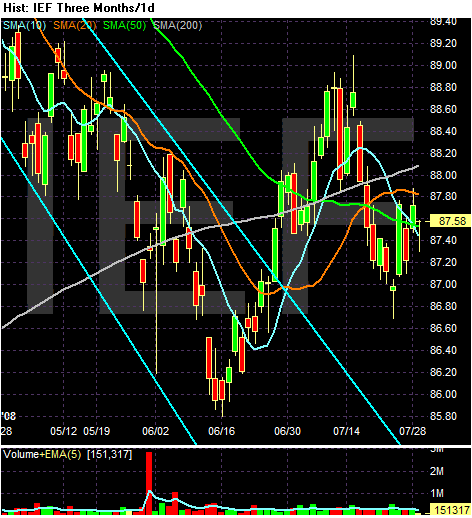
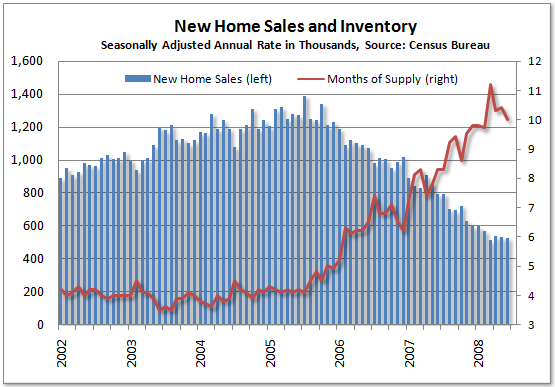


Merrill Lynch & Co., the third- biggest U.S. securities firm, will sell $8.5 billion of stock and liquidate $30.6 billion of bonds at a fifth of their face value to shore up credit ratings imperiled by mortgage losses.
Projections suggest the federal budget deficit could exceed $500 billion next year, complicating the debate between Barack Obama and John McCain over how to strengthen the economy while not worsening the nation's finances.
Deficit projections are ballooning because of lower tax receipts and government spending on economic-stimulus programs. The gap increasingly is threatening to play havoc with the two presidential candidates' domestic-policy plans, particularly Sen. McCain's big tax cuts and Sen. Obama's promised health-care expansion, and could force major changes in the winner's agenda.
On Monday, Sen. McCain, the Republican candidate, sought to turn the new deficit numbers to his short-term political advantage, without conceding much to those longer-term realities. Democratic rival Sen. Obama sought to keep the focus on the current shaky economy, economic inequalities and worries over job and retirement security.
The sparring came as the White House budget office boosted its estimate of the federal deficit for fiscal 2009 to $482 billion. With the full costs of the wars in Iraq and Afghanistan added in, the deficit for 2009 likely would exceed $500 billion, analysts said. The deficit projection for 2008 fell somewhat from the last official estimate in February, to $389 billion from $410 billion. Fiscal 2008 ends Sept. 30.

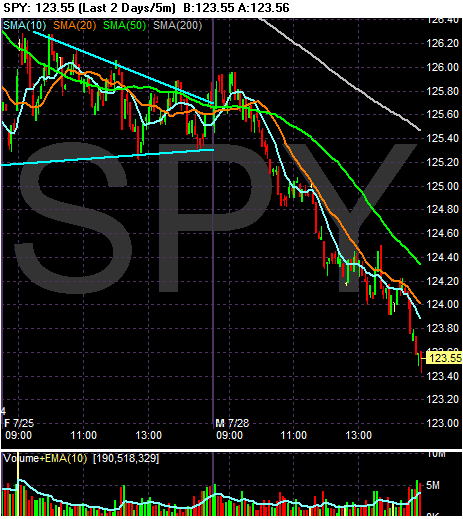
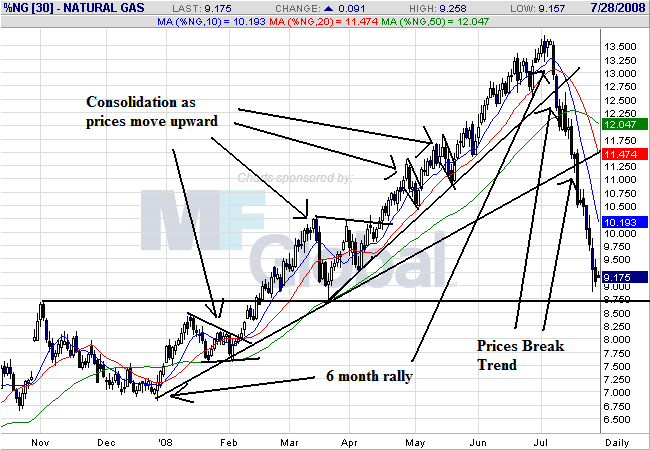
Halfway through earnings season, banks are still a drag, tech firms are doing OK while the overall outlook remains cloudy.
With 249 of the S&P 500 companies reporting results, second-quarter profits are on track to decline 17.9% vs. a year earlier, according to Thomson Reuters.
"I'd rate (earnings so far) as pretty bad," said Sam Stovall, chief investment strategist at S&P Equity Research. S&P forecast a 10% drop at the start of the quarter but now sees about a 20% shortfall, he said.
Financial firms' profits are forecast to dive 85%. The consumer discretionary sector, including automakers and home builders, also is a big loser.
But excluding banks, S&P 500 earnings should rise a respectable 7.7%, Thomson Reuters said.

